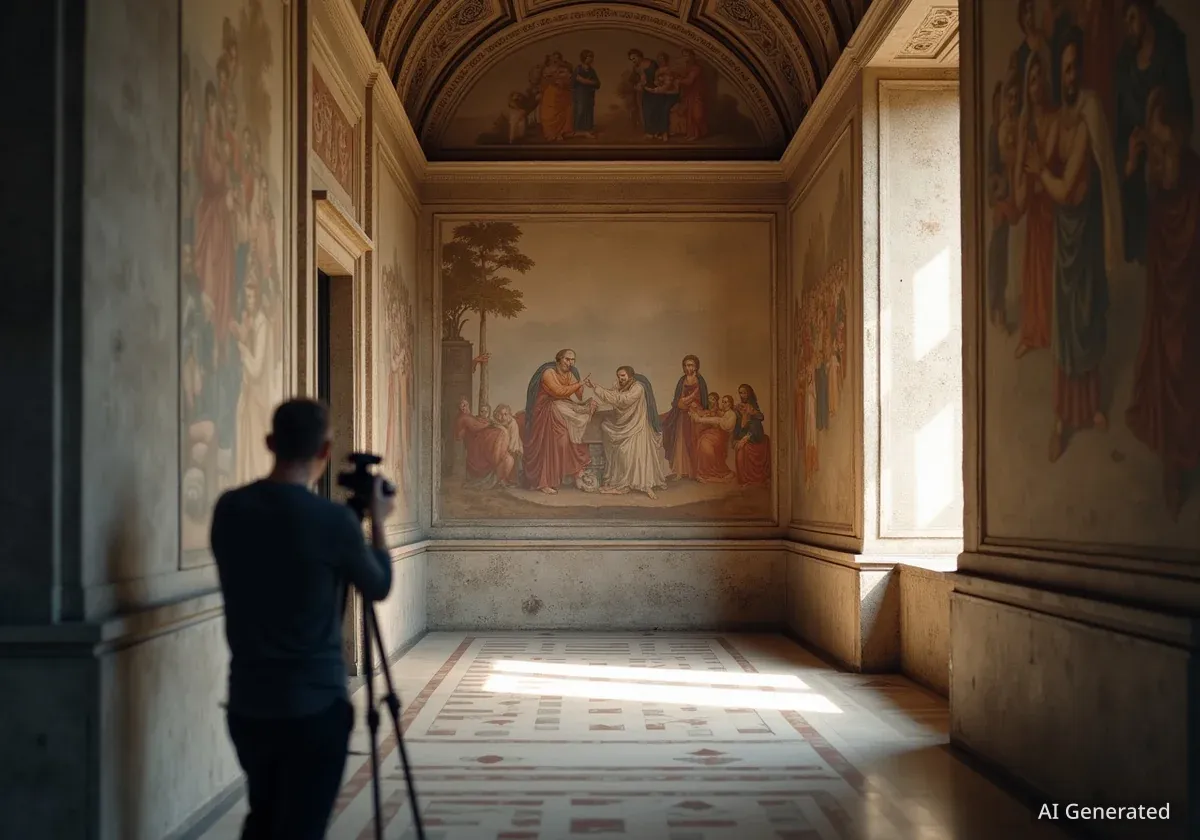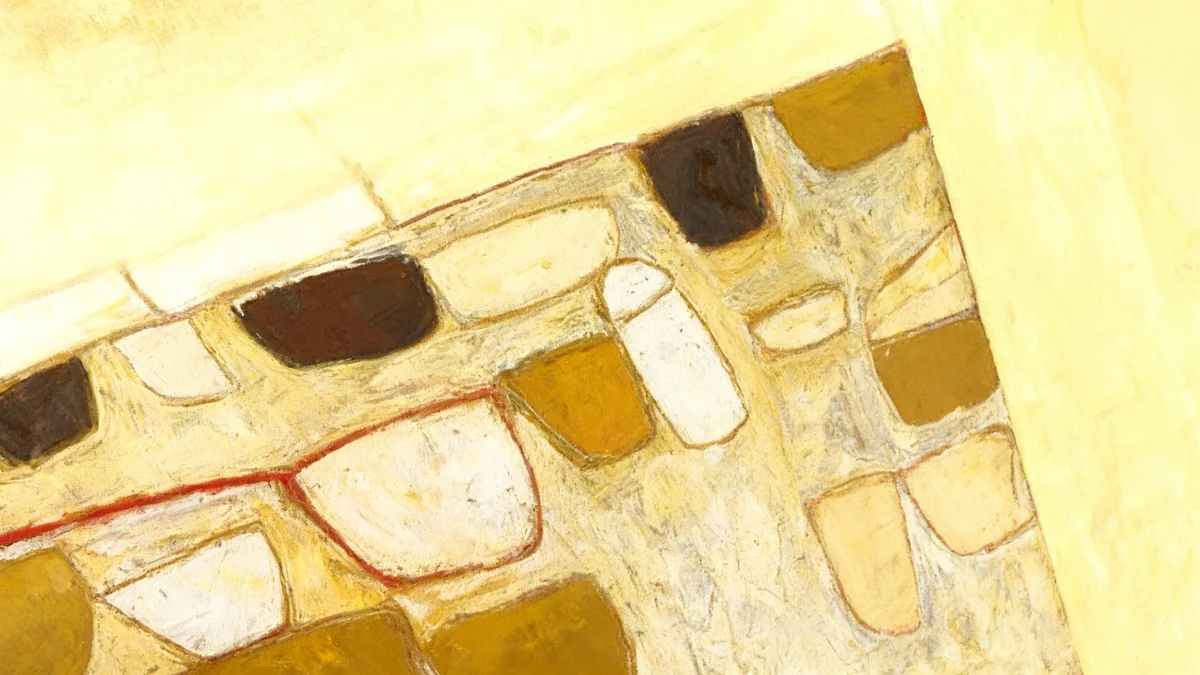A recent installment of the YouTube series 'Great Art Explained' offers an in-depth examination of Raphael's iconic fresco, 'The School of Athens'. Released between 1509 and 1511, this Renaissance masterpiece is a central work by one of the period's most influential artists. The video essay, presented by UK curator and gallerist James Payne, provides a comprehensive look at the painting's historical context, artistic techniques, and philosophical significance.
Key Takeaways
- James Payne's series explores Raphael's 'The School of Athens'.
- The fresco is located in the Vatican, specifically in the Pope's former private library.
- It represents philosophy, alongside frescoes for theology, poetry, and law.
- Raphael aimed to unite Classical and Christian thought in the artwork.
- The painting presents empirical and metaphysical ideas as complementary.
Understanding 'The School of Athens'
Raphael's fresco, officially titled 'The School of Athens', is a monumental work of art from the High Renaissance. It depicts a gathering of ancient Greek philosophers, mathematicians, and scientists. The painting is part of a larger decorative scheme within the Apostolic Palace in the Vatican City. Commissioned by Pope Julius II, these frescoes adorned what was once his private library.
The specific room where 'The School of Athens' resides is known as the Stanza della Segnatura. This room served as the Pope's personal office and library. The frescoes in this space were designed to represent the four branches of human knowledge: theology, philosophy, poetry, and law. Raphael's work visually embodies the concept of philosophy as a vital pillar of intellectual endeavor.
Historical Context of the Stanza della Segnatura
The Stanza della Segnatura was the first of the four 'Raphael Rooms' to be painted. Pope Julius II envisioned it as a space for his personal study and the signing of important documents. The themes chosen for the frescoes reflected the Pope's intellectual pursuits and the broader humanistic ideals of the Renaissance. Raphael was selected for this prestigious commission, marking a significant moment in his career.
James Payne's Analysis of the Fresco
In his video essay, James Payne meticulously guides viewers through the intricacies of 'The School of Athens'. He highlights Raphael's deliberate staging and composition. Payne emphasizes how the artist sought to bridge seemingly disparate intellectual traditions. Specifically, he discusses the unification of Classical Greek thought with Christian theological concepts.
Raphael's genius, according to Payne, lies in presenting empirical observation and metaphysical inquiry not as competing forces, but as complementary paths. Both avenues, the video suggests, contribute equally to humanity's ongoing quest for truth. This nuanced interpretation offers a fresh perspective on a widely studied artwork.
"Raphael’s meticulous staging sought to unify Classical and Christian thought, presenting the empirical and the metaphysical not as adversaries but as equal partners in the ceaseless human pursuit of truth," Payne explains in the video series.
Key Figures and Symbolism
The fresco features numerous historical figures, many of whom are identifiable. At the center stand Plato and Aristotle, representing the two main philosophical schools. Plato, pointing upwards, symbolizes his theory of Forms and the world of ideas. Aristotle, with his hand extended forward, signifies his focus on the empirical world and observation. Their positions and gestures are central to understanding the painting's message.
Other notable figures include Socrates, Pythagoras, Euclid, and Ptolemy. Raphael even included portraits of his contemporaries, such as Leonardo da Vinci (as Plato) and Michelangelo (as Heraclitus). The artist himself appears in the fresco, subtly positioned on the right side. This inclusion adds a personal touch and reinforces the notion of artists as intellectuals.
Did You Know?
- Raphael was only 26 years old when he began painting 'The School of Athens'.
- The fresco measures approximately 500 cm × 770 cm (16 ft × 25 ft).
- It is considered one of the most perfect embodiments of the classical spirit of the High Renaissance.
- Raphael used a technique called fresco buono, painting on wet plaster, which requires speed and precision.
The Broader History of Ideas
Payne's analysis extends beyond the painting's visual elements to its place within the wider history of intellectual thought. He illustrates how Raphael's work reflects a Renaissance ideal: the belief that ancient wisdom could coexist and harmonize with Christian doctrine. This period was marked by a resurgence of interest in classical antiquity, often referred to as humanism.
Humanist scholars during the Renaissance sought to integrate classical learning with Christian faith. 'The School of Athens' visually articulates this integration. It argues that philosophical inquiry, far from being opposed to religious belief, could enhance and deepen understanding of the divine and the natural world. This perspective was revolutionary for its time, moving away from purely theological dominance in intellectual discourse.
Raphael's Artistic Vision
Raphael's ability to create such a complex and unified composition speaks to his mastery. His use of perspective draws the viewer's eye deep into the painting, creating a sense of immense space and grandeur. The figures are arranged in a balanced and harmonious manner, reflecting classical ideals of order and beauty. Each character's pose and expression convey their intellectual activity, making the scene dynamic and engaging.
The vibrant colors and detailed drapery also contribute to the fresco's visual impact. Raphael's skill in depicting human anatomy and emotion brings the ancient philosophers to life. The overall effect is one of intellectual vigor and artistic brilliance, cementing Raphael's reputation as a leading figure of the High Renaissance.
Impact and Legacy
'The School of Athens' has had a lasting impact on art history and intellectual thought. It remains one of the most famous paintings in the world, frequently studied by art historians and philosophers alike. Its message of the unity of knowledge continues to resonate, even centuries after its creation. The fresco serves as a testament to the enduring power of human reason and creativity.
James Payne's 'Great Art Explained' series helps make such complex works accessible to a broader audience. In an era where accurate information is crucial, expert interpretations of cultural heritage become even more valuable. Payne's work ensures that the insights into masterpieces like 'The School of Athens' are readily available, fostering a deeper appreciation for art and its profound connections to human history and philosophy.
The Renaissance and Humanism
The Renaissance, spanning roughly from the 14th to the 17th century, was a period of intense cultural, artistic, political, and economic rebirth in Europe. It marked a transition from the Middle Ages to modernity. Central to this period was humanism, a philosophical and ethical stance that emphasized the value and agency of human beings, individually and collectively, and preferred critical thinking and evidence over established doctrine or faith. Raphael's 'The School of Athens' is a prime example of humanism in art, celebrating human intellect and achievement.




